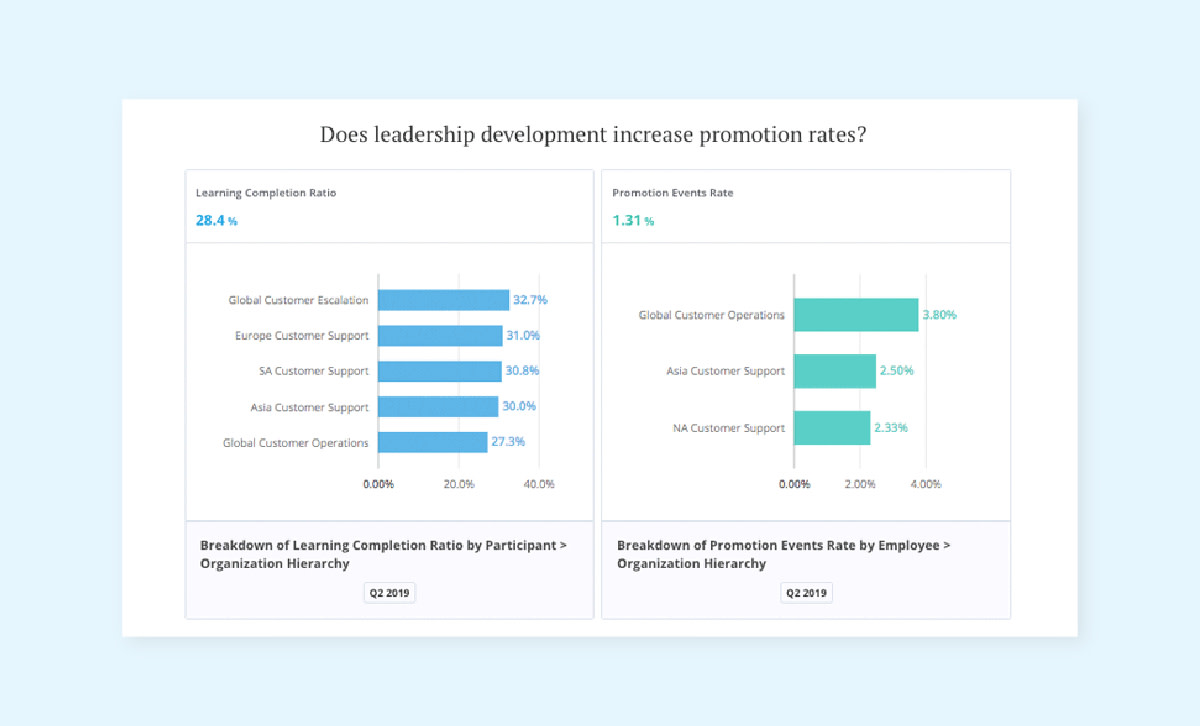3 Steps to Reskilling Retail Workers for Age of Automation
Here are three steps to take more a more data-driven approach to reskilling and in the age o retail automation.

Perhaps your organization is just starting to explore automation or has already started outfitting its stores with digital kiosks and warehouses with robots. If you work in retail HR, now is the time to start thinking more analytically about reskilling retail workers and the training programs that you offer.
They always show up, even during World Cup games. They can work 12-hour shifts without displaying any signs of fatigue. And they never linger around the break room long after they are due back on the floor.
In many ways, robots and other types of automated systems are perfect employees. But for retailers squeezed by intense competition and changing consumer habits, automation is not simply about producing an obedient workforce. It is a strategic imperative.
To woo customers with seamless brick-and-mortar shopping experiences, Walmart, Kroger, and Amazon are exploring the use of self-checkout technology. Behind the scenes, an increasing number of retailers are using robots in warehouses to speed up delivery times. On all fronts, the retail sector is ripe for widespread automation.
All of these changes will create pressures on retail workforces and for the HR leaders who manage them — but perhaps in surprising ways that are not immediately obvious to casual observers.
Automation in Retail: The Silver Lining
Self-service technologies and the use of robot workers have generated widespread anxiety about major job losses. According to a May 2017 study published by an investment advisor firm, between 6 million to 7.5 million retail jobs are at risk of being replaced due to automation over the next decade. Retail cashiers — and women in particular — are at highest risk for automation, the report stated.
But shift the focus from jobs to tasks and a more optimistic view emerges. As HR expert John Boudreau points out, ATMs were once thought to be the doom of bank tellers, but this proved to be false. In fact, the number of teller jobs increased with the number of ATMs because the number of banking transactions soared, and banks began to compete by hiring more bank employees to provide better customer service.
During the Industrial Revolution, the number of weavers rose as the work became more automated, explains this article from the Economist: “Improved efficiency led to higher production, lower prices and thus more demand for the tasks that the machines could not perform.”
The introduction of self-service cashiers appears to be following the same pattern of labor redistribution. When McDonald’s introduced self-service kiosks in thousands of stores, it asserted that the self-order kiosks were not a labor replacement. As one company spokeswoman told Business Insider, the kiosks “provide an opportunity to transition back-of-the-house positions to more customer service roles such as concierges and table service where they are able to truly engage with guests and enhance the dining experience.”
In terms of automation in warehouses, Amazon continues to add people to its workforce, even as it rolls out more than 100,000 robots worldwide. Workers who had previously stacked bins took courses at the company to become robot operators.
New Pressures for Retail HR Leaders: Strategic Learning Programs
Technology may not completely eliminate jobs. But it will create new challenges for employers and HR leaders in the form of skills gaps. Consider what happened when manufacturing started needing more workers with technical skills. The resulting skills gap left employers struggling to fill vacancies, making “corporate colleges” a necessity.
This link between rapidly evolving technology and internal “learn as you earn” programs is also prominent in other industries: AT&T launched a >$1 billion retraining effort One of our customers, as it expanded its mission of providing mailing and shipping products to incorporate an e-commerce focus, realized that it needed to train an entirely new skill set to support their business of the future.
This forces HR leaders to become more strategic: Instead of just looking at headcount demands, they must also look at how to design learning programs that address ever-changing skills requirements. However, to avoid over-spending on initiatives that don’t move the business forward, these programs must be built using a data-driven approach.
The New Skills Jungle: How to Strategically Navigate Your Way Through
Perhaps your organization is just starting to explore automation or has already started outfitting its stores with digital kiosks and warehouses with robots. If you work in retail HR, now is the time to start thinking more analytically about your training programs. Follow these steps to get the most out of your potential learning investments:
Step 1: Map the Skills to the Vision
Strategic businesses don’t just use technology for technology’s sake. If your organization is automating its stores or warehouses, it is likely that there is a very good business reason for doing so, whether it’s providing consumers with a frictionless experience or speeding up e-commerce processing times to increase market share. With an understanding of how automation is solving a particular business problem and on how drastically the business will be changing to get there, you will be in a better position to understand how human skills factor into the equation.
By looking at the business goals, the true impact of skills gaps become apparent. For example, if enhanced customer service is a goal, you may need to look at upskilling your cashiers to become more like customer experience agents who deal with more complex interpersonal tasks.

Step #2: Define the Gap
The next step is to determine who you can train within your existing workforce to work in an automated environment. This will require you to look at three areas: people, tasks, and time.
People: Quantify who is likely to both succeed at training as well as those who are likely to stay with the organization long enough to get the training needed and use it to benefit the business. For retailers, this will mean separating out who is there for a temporary casual reason vs. those people who are permanent or are likely to become permanent employees.
Tasks: Deconstruct jobs into work elements, like tasks. This can be done for any number of roles across the organization, such as sales associates and cashiers in brick and mortar stores, or workers in warehouses. In general, for low-skilled occupations, robots and AI can do tasks that are more repetitive, independent and physical, but not tasks that are variable, interactive, and mental, according to Boudreau.
Time: Time to Productivity is a metric that allows you to look at how long it takes a new employee (who lacks all the required skills) to get to the point where they are independently productive. Time to productivity is very important because it is an indicator of how much of an investment is required to reach your business goals.
Typically, you measure Time to Productivity by looking at historical data. This may be impossible to get if your company is heading in a completely new direction. However, if your organization has conducted any pilot projects, you can use this information to generate a picture of what Time to Productivity looks like on a bigger scale.
Step 3: Set goals
Once you have determined how aggressively you need to close certain gaps, you can set goals, such as a 50% participation in a certain type of training program during the year. This will also give you an idea of how much budget you need for the training program to deliver on business goals.
To determine whether the training program has been successful, you will need to look beyond participation rates. You can consider whether this training has helped move the needle on areas the business really cares about, such as Sales Per Square Foot or faster e-commerce processing times.
Automation: The Human Factor
In the distant future, we may have intelligent systems that surpass humans in terms of big picture thinking, the execution of spontaneous manual tasks, and even empathy. In the meantime, though, people with deep interpersonal and technical skills will be needed to work alongside robots and intelligent sensors, and the best place to find those people may be within the organization itself.
In this way, automation makes learning and earning a concurrent — not a consecutive — process. The HR leaders who can think about people in terms of skills and abilities, instead of job roles, will be in the best position to help determine where and when the business needs the human touch. When a gap emerges that can’t readily be filled through traditional methods like recruitment, innovative learning programs become key. This not only benefits employers, but motivates workers who are hungry for new skills.


